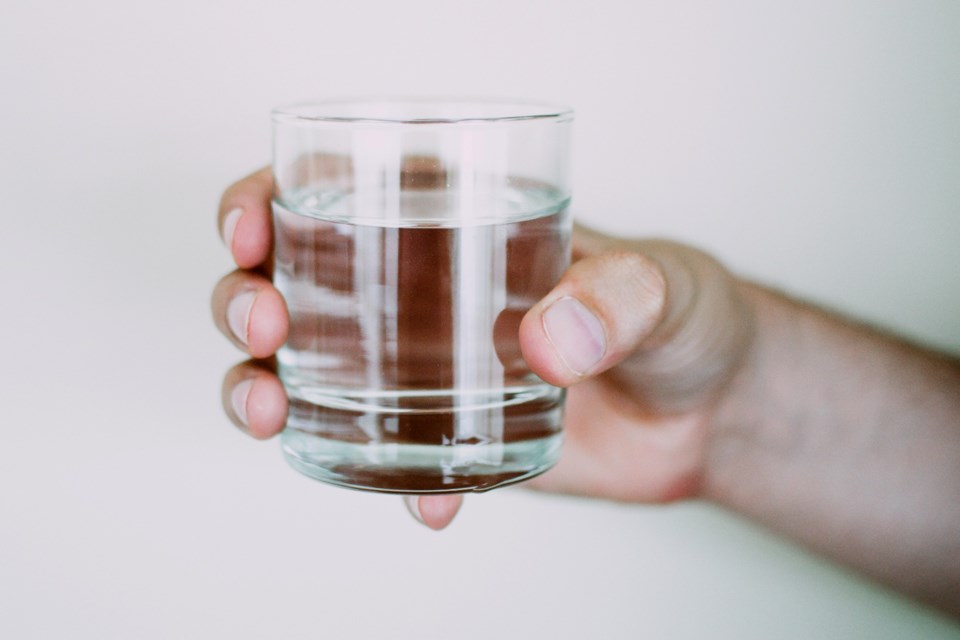Once salt permeates a drinking water system, it tends to remain there unless treated by a cost-prohibitively expensive system which also robs drinking water of healthy minerals.
So describes City of Greater Sudbury water treatment manager Julie Friel while reflecting on the city’s latest annual water quality report, released earlier this week.
While the far-reaching municipality's various water treatment facilities have continued pumping out safe drinking water, one exceedance makes a regular appearance in the 2022 report.
Sodium, which reaches city waterways primarily through the application of road salt during the winter months, exceeds desired maximum concentrations of 20 mg/L in various municipal water systems. This maximum is the level at which those on sodium-restricted diets are cautioned against consuming tap water.
The Sudbury Drinking Water System, for example, includes the Wanapitei Water Treatment Plant, the David Street Water Treatment Plant and the Garson Well Field.
The Wanapitei system had a sodium level well below the threshold, at 1.67 mg/L, the David Street system measured between 52.2 mg/L and 57.8 mg/L, while the Garson system measured 67.5 mg/L and 70.8 mg/L.
Most systems are measured once per year, but Friel noted the Onaping/Levack Drinking Water System’s wells are measured monthly due the area’s water system containing higher concentrations of sodium than most others.
Last year, the Onaping/Levack wells measured between 40.3 mg/L and 105 mg/L.
It’s an old legacy system the city took over from a mining company, and the wells were built in close proximity to a highway which has road salt applied to it for traffic safety purposes.
Salt in the City of Greater Sudbury’s drinking water system is a long-established issue, and local physicians caution patients on a low-sodium diet to avoid drinking tap water in certain areas..
“It’s not a health hazard for most people, but it could be a health hazard to people on a low-sodium diet,” Friel said.
Road salt reaching drinking water supplies is an issue that reaches far beyond Greater Sudbury, and Health Canada estimates that between 25 to 50 per cent of salt used on roads for snow and ice control enters the groundwater, where it can elevate sodium levels in public water supplies.
“A nation-wide survey of concentrations of various elements in drinking water supplying 122 municipalities, or 36 per cent of the Canadian population, found that drinking water at the consumer's tap contained approximately 5.6 mg/L of sodium, as a national median, with concentrations ranging from 0.3 to 242 mg/L.”
All of the city’s water quality measurements are undertaken by a third-party lab and submitted directly to the province prior to the municipality, Friel said.
There’s no defined limit to sodium levels in drinking water because it’s not considered a toxic element, although once it hits 200 mg/L it can begin to be detected through a salty taste.
In a report last year, Public Health Sudbury and Districts noted that the average intake of sodium from drinking water is a small fraction of that consumed in a normal diet, though those with hypertension or congestive heart failure might require a sodium-restricted diet which makes their drinking water intake more significant.
A small bag of potato chips contains 229 mg of sodium, four canned olives have 249 mg, one medium dill pickle has 833 mg and a 250 ml can of chicken vegetable soup has 1,128 mg.
The city’s winter maintenance program ensures as little salt is used as possible on municipal roads while also keeping them safe, while other regulations, such as the Greater Sudbury Source Water Protection Plan, also strive to protect drinking water sources.
Although sodium was the only material noted to exceed a desired threshold in the city’s 2022 water quality report, they also note the presence of tetrachloroethylene in the Garson Well Field.
Still at levels below half the provincially regulated limit, Friel said the city is looking at opportunities to decommission the existing water supply wells and supply the area through the Sudbury Drinking Water System.
Still “years” away due to a significant capital investment, she said, “There’s a lot that needs to be done to get to that point.”
Tetrachloroethylene is used in mechanical shops to clean parts, as well as drycleaning facilities.
Elevated levels of trihalomethanes (THMs) and haloacetic acids (HAAs) were found in the Vermilion distribution systems. A working group has been formed with participants from Vale and the City of Greater Sudbury to address the concern.
Even so, the averages were measured at levels within the Municipal Drinking Water Licenses.
These chemicals are disinfection byproducts that are formed when chlorine reacts with natural organic matter in water.
Despite these points of caution, the city’s collection of drinking water systems operated throughout 2022 without exceeding any limits within the Municipal Drinking Water Licenses.
There were 14 adverse water quality incident reports filed in 2022, of which eight were for information purposes of non-compliance events not of adverse water conditions.
Included among the six adverse water condition incidents is one case in the David Street system where a fluoride test of 1.63 mg/L was measured. After being reanalyzed, it was revealed to be under the 1.5 mg/L threshold.
Other incidents include more sampling errors, a water main break resulting in a loss of pressure in Garson (with no water quality issues recorded) and another low-pressure incident.
“Due to the criticality of safe, reliable drinking water and the continuing improvements made to source water protection legislation; CGS continues to invest in our water works systems to perform critical upgrades and infrastructure renewal,” according to the report.
Annual water quality reports dating back to 2015 can be found on the city’s website by clicking here.
Tyler Clarke covers city hall and political affairs for Sudbury.com.
